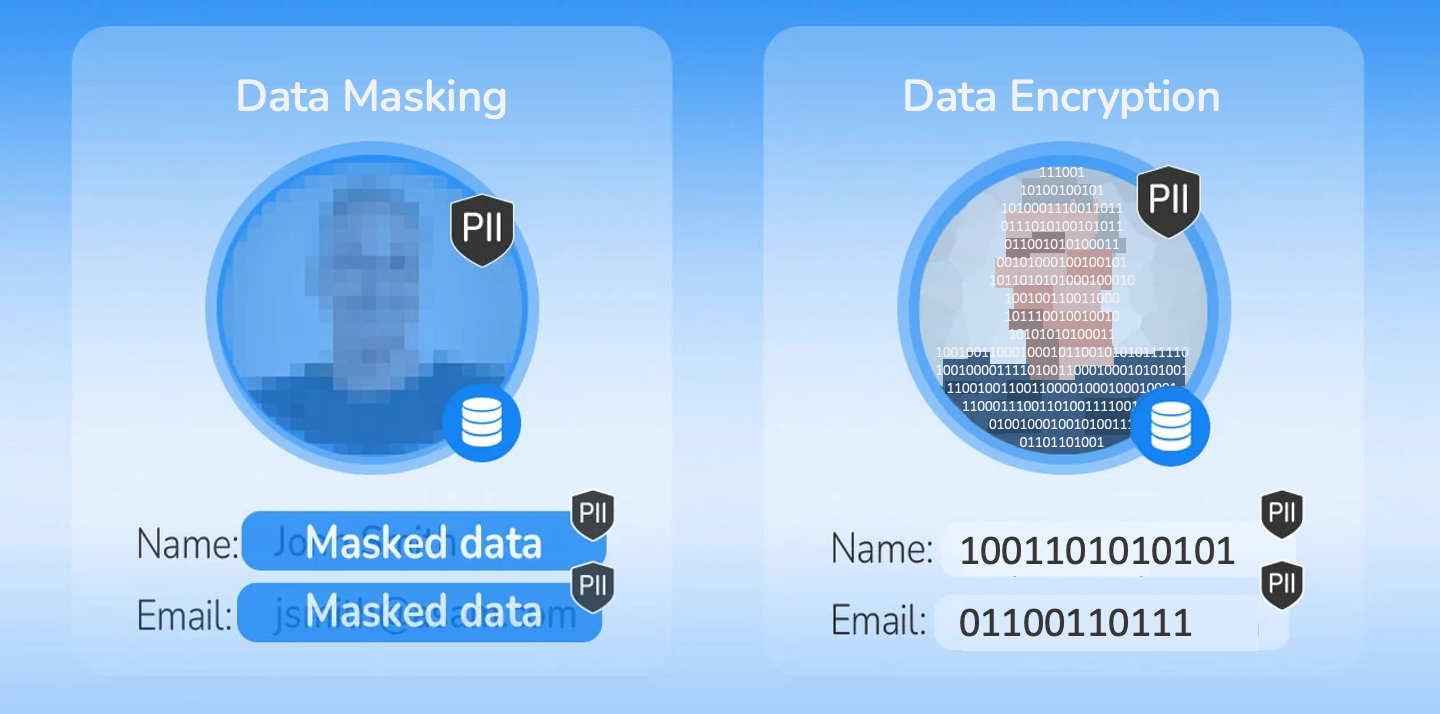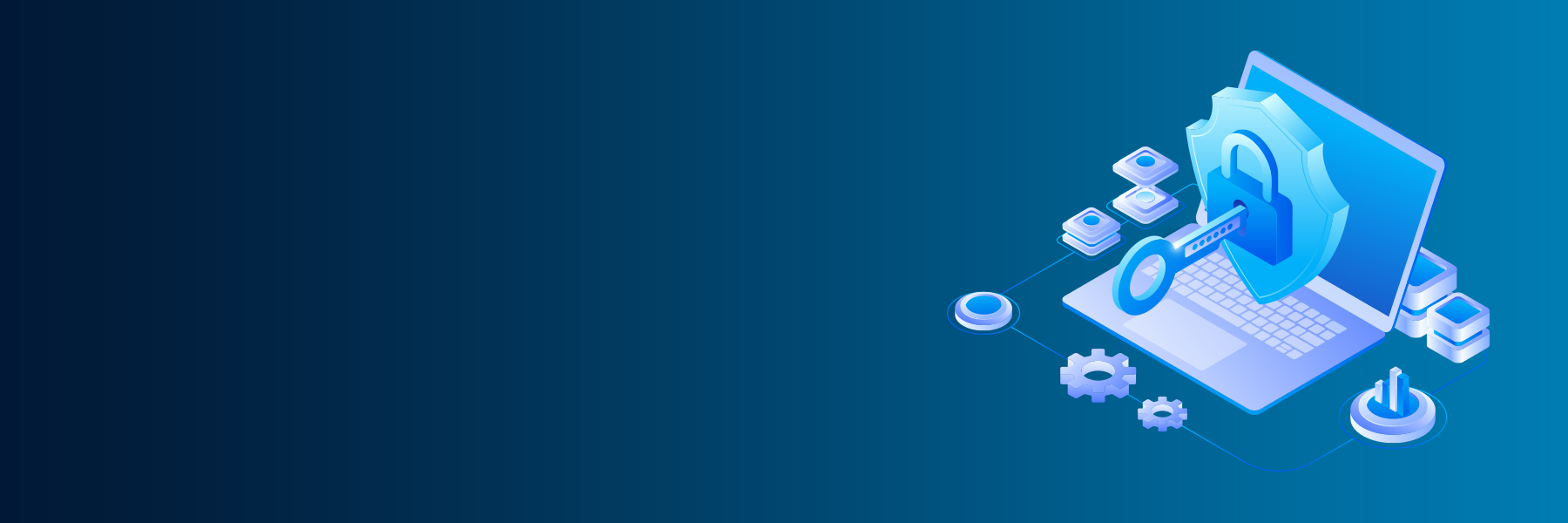22 January 2024
SafeAeon Inc.Every time we allocate a gigabyte of data, the question looms: "How do we protect its weaknesses?" comes up. Fortunately, we have a few options in name the name of data security. However, because data masking and tokenization are the two main options, it can be hard to pick the right shield. Both methods hide useful information, but they do so in very different ways and for very different reasons.
To choose between data masking and tokenization, you need to know what you need. Data masking is still valid if real data is needed for tests or compliance. But when the most important thing is to maximize security while still letting users use data, tokenization wins. As data breaches get smarter, it's more important than ever to use strong, changeable security measures like tokenization. In a world driven by data, picking the right shield for your data isn't just about keeping it safe; it's also about getting the most out of it. Therefore from this post, we will help you bring light on every aspect of data masking vs tokenization to help you take the right call.

1. Data Masking Vs Tokenization
How does Data Masking work?
Data masking is yet another strong way to keep your data private. As companies try to deal with the growing amounts of data they have, protecting its privacy becomes harder. Masking is the process of hiding, hiding, or masking private information by replacing it with random characters or other information that is not sensitive. This process is very important in both production and training settings. Masking keeps private information, like credit card numbers, hidden from people who shouldn't see it. It lets writers work with safe databases without having to worry about private data getting out. Data hiding uses many methods, such as replacing, scrambling, or deleting data. People often use this method to keep banking information and other sensitive data safe, making sure that data handling is private and safe.
How does Tokenization work?
Tokenization is an old way to keep data safe, and it's even more important now that most information, like digital wallets, is stored online. It includes swapping out sensitive data for tokens that are not sensitive. These tokens are just placeholders for the real data; they have no connection to it at all, which means that the private data can't be accessed. Tokenization was first popular in the credit card business, but it is now being used in many other fields as well. It stores private information, like credit card numbers, in a "token vault," which is an outside system that is very safe. The code, which is linked to the original data, has no value when it's not in its proper place. It's only used as a guide, and the sensitive info itself is kept safe.
Tokenization, however, works like a complex game of hide-and-seek. Instead of sensitive data, useless tokens, such as alphanumeric strings that don't make sense, are used instead. These tokens stand in for real things, letting approved users access and do calculations without showing the real value. De-tokenization is important because it lets authorized users get back to the source data when they need to.
2. Data Masking Vs Tokenization
What Are The Benefits of Data Masking?
Data masking has a lot of important benefits, especially when it comes to data protection and security:
- Strengthened Security: Data masking hides private data, which helps stop data breaches and illegal access. Instead of sensitive data, fake data that looks like real data is used instead. This lowers the chance that sensitive data will be misused if there is a security breach.
- Compliance with Regulations: Many fields are controlled by strict rules about data privacy, such as GDPR and HIPAA. Data masking helps businesses follow these rules by keeping private data from seeing people who aren't supposed to see it. This keeps them from facing legal and financial penalties.
- Safe Data Sharing: Data that has been masked can be sent to outside groups, like testing teams or consultants, without putting the original private data at risk. This lets people work together and improve things without putting private information at risk.
- Testing and Development: Real data sets are often needed for correct results in building and testing software. Data filtering lets developers and testers use real data without putting private information at risk. This makes development processes more effective and safe.
- Minimal Effects on Operations: Data masking doesn't change the format of the original data, so regular business operations can keep going as usual. People can work with the hidden data as if it were real, which boosts productivity and makes operations run more smoothly.
- Reduced Risk of Internal Misuse: Hide sensitive data: This way, companies can lower the risk of internal threats or accidental misuse by workers who don't need to see sensitive data for their regular jobs.
- Cost-effective Security Solution: Data masking is usually less expensive than other security methods that can be used. It works well to keep private information safe without having to spend a lot of money on upgrading security systems.
- Data Analysis and Reporting: Data that has been masked can still be used for analysis and reporting. Businesses can learn useful things from their data without letting private information slip.
What Are The Benefits Of Tokenization?
Tokenization has a lot of important benefits, especially when it comes to data protection and compliance:
- Better security: Tokenization replaces private information with one-of-a-kind identification marks (tokens) that can't be used to steal information. Since the codes don't hold the value of the original data, this makes the data much less likely to be stolen or accessed without permission.
- Reduced Compliance: Because tokenization gets rid of private data from a company's systems, it makes it much harder to follow many data protection rules and standards, like PCI DSS for credit card data.
- Simplified Data Environment: Using tokens instead of private data makes it easier to handle and protect data. Making things easier can lead to more simple and safe ways of managing data.
- Fewer Effects on Current Business Processes: Tokenization can be put into place in a way that has few effects on current business processes. Tokens can keep the style of the original data, which makes sure that they can be used with current systems and programs.
- Cross-Platform Security: Tokens can be used on a variety of platforms and environments, making them a flexible way to protect data in a range of settings, from cloud storage to mobile purchases.
- Lower Chance of Internal Threats: Because tokens don't hold private data, there is a much lower chance that data will be misused or stolen within the company. This is especially important in places where a lot of people can access private information.
- Makes Payment Processing Safer: Tokenization protects credit card transactions by replacing card numbers with "tokens" in the payment business. This keeps real card numbers from being saved or sent during transactions, which lowers the chance of card data being stolen.
- Tokens keep the original data safe, usually in a token vault, so they don't get mixed up with private data. This separation of physical and mental areas makes data even safer.
- Reversibility: To access an encrypted message, you need the key. Tokenization, on the other hand, can only be undone through the tokenization system, which adds an extra layer of security.
- Support for Data Analytics: Parts of the data that aren't sensitive can be kept in the token. This lets analysis and business intelligence tasks be done without revealing sensitive data.
Conclusion
In the end, the needs of the company determine whether data masking or tokenization is best. What kind of info is being protected is also important. Data masking hides original data while keeping the style the same, which makes it perfect for keeping data useful. That being said, it's also important to lower the risk. Tokenization, on the other hand, swaps out private information for unique marks. This provides strong safety, especially for personal and payment information. It also makes sure that different data security laws are followed. Companies should think about things like the type of data they have and the rules they need to follow. They also have to think about how to balance security and ease of use. Data hiding and tokenization are both very important in the end. In today's data-driven world, they are very important for keeping private data safe.
At the end of the day, both data encryption and tokenization are necessary for keeping data safe. At this point, when data is so important, their importance is even greater. If you use either of these ways correctly, they can protect your sensitive information from threats and breaches. We also suggest expert advice from SafeAeon which can provide business-centric suggestions.














